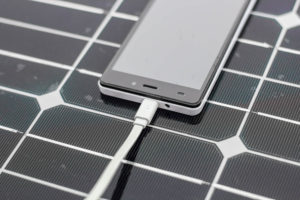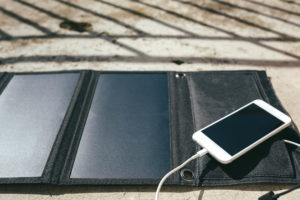 a Solar Charger" width="" height="" />
a Solar Charger" width="" height="" /> a Solar Charger" width="" height="" />
a Solar Charger" width="" height="" />
In today’s world of portable technology, having a reliable charging solution is essential, especially in outdoor or remote areas. Solar chargers offer a sustainable and convenient way to harness the sun’s power. This comprehensive guide will walk you through the process of effectively using a solar charger to recharge your devices on the go.
Solar chargers are an incredible innovation that harnesses the sun’s power to provide a sustainable and convenient charging solution. By understanding the intricacies of solar chargers, you can fully grasp their functionality and benefits.
Solar chargers comprise several components that combine to convert solar energy into usable electricity. The core component is the solar panel, which comprises multiple solar cells. These cells capture sunlight and convert it into electrical energy through the photovoltaic effect.
The charge controller is another crucial component of a solar charger. It regulates the charging process, ensuring that the battery is charged optimally without overcharging or undercharging. It monitors the battery’s state of charge and adjusts the charging voltage and current accordingly.
The battery in a solar charger serves as an energy storage unit. It stores the electricity generated by the solar panels for later use. The capacity and type of battery used in a solar charger can vary, and choosing one that suits your power requirements is essential.
Understanding these components and their roles in a solar charger enables you to make informed decisions when selecting the right charger for your needs. Understanding the science behind solar charging empowers you to utilize solar energy effectively and take advantage of its numerous benefits.

It’s crucial to grasp the fundamental concepts of solar charging to utilize a solar charger effectively. Solar charging involves converting sunlight into usable electricity to charge your devices.
The first step is to position the solar charger in an area with maximum sunlight exposure. Direct sunlight allows the solar panels to capture the maximum amount of solar energy. Proper positioning and angling of the solar panels ensure optimal energy absorption.
Once the solar panels capture sunlight, the solar cells convert the light energy into electrical energy. This conversion occurs through the photovoltaic effect, in which the photons from the sunlight dislodge electrons within the solar cells, creating an electric current.
The charge controller plays a vital role in the charging process. It regulates the flow of electricity from the solar panels to the battery, ensuring that the battery receives the appropriate voltage and current. This prevents overcharging, damaging the battery and optimizes the charging efficiency.
The battery stores the generated electricity for later use. It acts as a reservoir of power, allowing you to charge your devices even when sunlight is unavailable. When you connect your device to the solar charger, the stored energy from the battery is used to charge your device, providing a reliable power source wherever you go.
By understanding the charging basics of a solar charger, you can make the most of its capabilities and ensure efficient and effective charging of your devices.
To optimize your solar charging experience and maximize the benefits of solar energy, consider the following tips:
By following these tips, you can optimize your solar charging experience and make the most of solar energy. Effective solar charging allows you to rely on clean and renewable power, reducing dependence on traditional electricity sources and contributing to a greener and more sustainable future.

Solar chargers can effectively charge a wide range of devices. Here are some considerations for charging specific devices:
By understanding the charging considerations for different devices, you can effectively utilize your solar charger to keep all your devices powered up, whether on the go or in remote locations.
Solar power banks provide portable and renewable power solutions, ensuring that you have access to charging capabilities wherever you go. By understanding the charging and usage of solar power banks, you can effectively utilize them to keep your devices powered up:

In addition to the main aspects of using solar chargers and solar power banks, here are some additional considerations and troubleshooting tips:
By considering these additional aspects and troubleshooting potential issues, you can enhance your solar charging experience and ensure a reliable and sustainable power source wherever you go.
At Solar Panels Network USA, we are dedicated to helping our clients harness solar energy effectively. This case study highlights our approach to guiding a client on the effective use of a solar charger to power their devices during outdoor activities and remote work.
Our client, a remote worker and avid camper, needed a reliable and sustainable power source to keep their devices charged while on the go. They sought a solar charger that was easy to use, portable, and efficient in various outdoor conditions.
Understanding Solar Charger Components
We began by explaining the key components of a solar charger: solar panels, charge controller, and battery. This knowledge was crucial for the client to understand how to maximize the efficiency and longevity of their solar charger.
Selecting the Right Solar Charger
Given the client’s need for portability and sufficient power output, we recommended a high-capacity solar charger with integrated panels and a built-in power bank. This choice provided the flexibility to charge multiple devices and store energy for use during cloudy days or nighttime.
Optimizing Solar Panel Placement
We advised the client on the importance of positioning the solar charger in direct sunlight, free from obstructions like trees or buildings. By regularly adjusting the angle and orientation of the panels to track the sun’s movement, the client could ensure maximum energy absorption throughout the day.
Regular Maintenance and Cleaning
To maintain optimal performance, we emphasized the necessity of cleaning the solar panels regularly. Using a soft cloth and mild detergent, the client was able to remove dust and debris, ensuring the panels operated at maximum efficiency.
Efficient Energy Management
We provided tips on managing the energy usage of their devices, such as lowering screen brightness and disabling unnecessary background processes. By optimizing device settings, the client could extend the battery life and make the most of the available solar energy.
Monitoring and Evaluation
We equipped the client with a basic monitoring tool to track the charging progress and performance of the solar charger. Regularly checking the LED indicators and power output allowed the client to ensure that the devices were charging effectively.
The implementation of these strategies resulted in:
At Solar Panels Network USA, our goal is to provide clients with effective solar solutions tailored to their specific needs. By understanding the components and functionality of solar chargers, optimizing panel placement, and promoting efficient energy management, we helped our client achieve a reliable and sustainable power source for their devices. Our expertise ensures that clients can confidently utilize solar energy and enjoy the benefits of clean, renewable power. Embrace the power of solar energy with our expert guidance and stay connected wherever you go.
Proper placement of your solar charger is key. Ensure it’s positioned in direct sunlight and free from obstructions to maximize energy absorption and charging efficiency.
Senior Solar Installation Engineer
Regular maintenance, such as cleaning the solar panels, helps maintain optimal performance. Dust and debris can significantly reduce the efficiency of solar panels, so keeping them clean is essential.
Lead Solar Technician
Selecting a solar charger that matches your power requirements and device compatibility ensures effective and efficient charging, whether for small gadgets or larger devices.
Solar Energy Consultant
Solar chargers provide a sustainable and portable solution for charging your devices by harnessing the sun’s power. Understanding how to use a solar charger effectively enables you to maximize solar energy and stay powered even in remote locations.
Remember to position your solar charger for maximum sunlight exposure, clean the solar panels regularly, and optimize device settings for efficient charging. Consider the specific power requirements of your devices and choose a solar charger that best suits your needs.
Embrace the power of solar energy and the convenience of portable charging. With proper usage and a reliable solar charger, you can confidently charge your devices wherever you go, harnessing the sun’s energy to stay connected.
Remember to consult the user manual provided by the manufacturer for detailed instructions and safety precautions. Enjoy the freedom and independence solar charging provides, knowing you are utilizing a clean and renewable power source for your portable charging needs.
Solar Panels Network USA stands at the forefront of solar energy solutions, driven by a team of seasoned solar engineers and energy consultants. With over decades of experience in delivering high-quality solar installations and maintenance, we are committed to promoting sustainable energy through customer-centric, tailored solutions. Our articles reflect this commitment, crafted collaboratively by experts to provide accurate, up-to-date insights into solar technology, ensuring our readers are well-informed and empowered in their solar energy decisions.